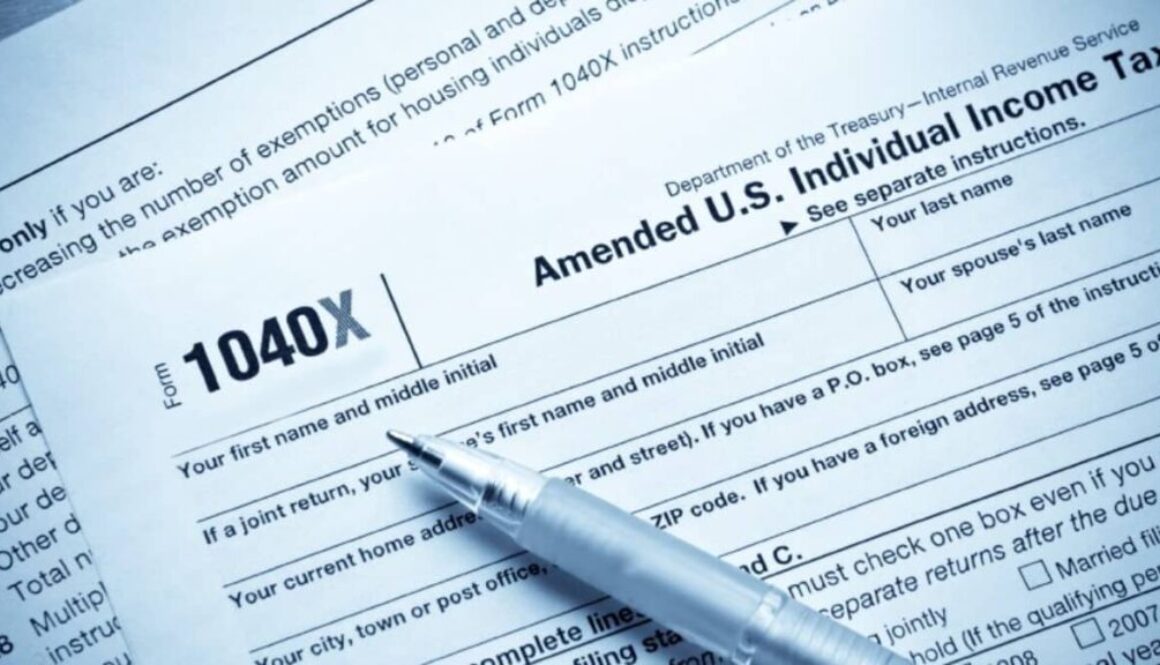
Blog
- 1099
- 401K
- accounting
- Advanced Child Tax Credits
- Backups
- bank
- banking
- Blog
- breach
- Budget
- business
- cash
- Child Tax Credits
- Church
- church tax
- Contributions
- cost savings
- credit
- credit report
- crypto currency
- data
- deductions
- donations
- economy
- embezzlement
- Employee
- Employee forms
- Employer forms
- Employers
- ERISA
- expenses
- Featured
- financial
- financial statements
- flow
- Forms
- fraud
- Giving
- Health
- Health Coverage
- Health Insurance
- home
- housing
- HRA
- HSA
- I-9
- ICHRA
- Images
- Individual Coverage
- Insurance
- invest
- investment
- IRA
- leases
- legal
- loan
- long-term
- maintenance
- mileage
- News
- non cash contributions
- pandemic
- parking
- Planning
- Podcast
- protection
- Retire
- Retirement
- savings
- scam
- scams
- statement
- Stimulus
- Stimulus checks
- stocks
- tax
- Tax credits
- tax documents
- Tax forms
- tax scam
- Technology
- theft
- Top Stories
- trends
- Uncategorized
- Updates
- virtual currency
- w-2
- World


Tax Changes For 2022
Here is a summary of tax changes for 2022:
- The standard deduction for married filing jointly will be $25,900; single & married filing separately (MFJ) = $12,950, head of household = $19,400.
- Tax rates: 10 percent for single individuals with income $10,275 or less ($20,550 for MFJ). 12 percent for income over $10,275 ($20,500 for MFJ). 22 percent for income over $41,775 ($83,550 MFJ); 24 percent for income over $89,075 ($178,150 MFJ); 32 percent for income over $170,050 ($340,100 MFJ); 35 percent, for income over $215,950 ($431,900 MFJ); 37 percent for individual single taxpayers with income greater than $539,900 ($647,850 for MFJ).
- The personal exemption for tax year 2021 remains at 0.
- There is no limitation on itemized deductions.
- The max Earned Income Tax Credit is $6,935 for taxpayers with three + qualifying children.
- The limitation for flexible spending arrangements remains $2,850. For cafeteria plans the maximum carryover is $570.
- Self-only coverage in a Medical Savings Account: the minimum plan deductible must be no less than $2,450; no more than $3,700. For self-only coverage the maximum out-of-pocket is $4,950. The family coverage floor for the annual deductible is $4,950, no more than $7,400 and the out-of-pocket expense limit is $9,050.
- The foreign earned income exclusion is $112,000.
- The annual exclusion for gifts increased from $15,000 to $16,000
- The penalty for failure to file a tax return within 60 days of the due date is $210 or 100% of the tax due, whichever is less.

Worth Noting
We recently attended a conference on church tax and legal issues. Here are a few take-aways worth noting:
The IRS and the Department of Labor have recently hired more staff to review and enforce employment law violations. Contract labor is (and always has been) an area that they pay special attention to. If you issue a 1099 to any staff member, you should review to see if they should be receiving a W-2 instead. Even if you reviewed this last year, you should contact an employment attorney to review it again, as the new administration has recently changed many of the rules. These changes mean that your employee handbook should also be reviewed to make sure it complies with any rule changes. Also, if you issue a W-2 and a 1099 to the same person, this will be flagged by the IRS.
Compensation in any form to interns is considered compensation. This includes tuition payments made directly to their school. These payments should be added to their W2 form.
Never throw away old insurance policies. As some states are removing the statute of limitations on some crimes, it may be necessary to know who the insurer was decades ago if you are pulled into a lawsuit.
Finally, please make sure that the employment attorney and or any professionals that you use are familiar with and have experience with churches. There are unique rules for churches that differ from other non-profits.

Do You Need To Amend Your 2020 Return?
Congress amended the tax code in March to exempt $10,200 ($20,400 for a couple) of unemployment from taxable income (only for those with adjusted gross income less than $150,000 before the unemployment income). By the time the IRS implemented the change, which was retroactive for 2020, many had already filed their tax return.
The IRS has since come out and said not to worry, they will review previously filed returns and issue refunds beginning in May if taxes were paid on unemployment benefits (up to the $10,200/20,400 limits). However, it may still be beneficial to file an amended return.
While the IRS will refund federal taxes that were paid on the unemployment, it will not recalculate any changes for tax deductions or credits that you might now qualify for after your adjusted gross income is reduced. (It will recalculate credits if they were on your original return, but if you didn’t qualify on the original return, but now you do, you need to file an amended return.) The credits include the Earned Income Credit, college credits, etc.
You may also need to file an amended return to receive a refund from your state. You need to first check to see if your state is offering the same exemption (13 states have not done so).

2021 Trends
A recent article listed the following trends emerging in 2021:
-
- Many in ministry will move from full-time to bi-vocational status.
- There will be more baby boomers than children in most churches.
- A boom in “micro-churches” (50 or fewer people). This will be fueled by multi-site campuses.
- Virtual church will complement in-person services – with a blended approach.
- Nearly 90% of churches feel they are in need of a “revitalization”.
- Healthier churches are “fostering” and “adopting” struggling churches.
- Average attendance and donations are predicted to decline 20-30% after the pandemic is stabilized, however, smaller churches will recover quicker.
- New church startups are also trending down.
2020 may be over, but we enter 2021 with many challenges. The way we “did church” has changed and continues to do so. In some areas things will never go back to “normal”. How is your church dealing with this shifting landscape? How have you planned on providing the resources needed to meet these changes? Be willing to embrace these changes by reducing or eliminating financial support for some programs that are no longer effective in order to provide resources needed for new areas of opportunity and changing demographics.
On a personal note, I have not seen many of the negative trends above reflected in most of the churches that we work with. In fact, many experienced their best year financially in 2020.
There is no recession in God’s economy.

2021 Tax Changes
The Internal Revenue Service issued its annual inflation adjustments for tax year 2021.
- The standard deduction for married couples filing jointly for tax year 2021 is increasing to $25,100, an increase of $300. For single taxpayers and married individuals who file separately, the standard deduction is increasing to $12,550 for 2021, up $150, and for heads of households, the standard deduction will be $18,800 for tax year 2021, also up $150.
- The top tax rate stays at 37 percent for individual single taxpayers with incomes greater than $523,600 ($628,300 for married couples filing jointly). The other rates are 35 percent, for incomes over $209,425 ($418,850 for married couples filing jointly); 32 percent for incomes over $164,925 ($329,850 for married couples filing jointly);24 percent for incomes over $86,375 ($172,750 for married couples filing jointly); 22 percent for incomes over $40,525 ($81,050 for married couples filing jointly); 12 percent for incomes over $9,950 ($19,900 for married couples filing jointly). The lowest rate is 10 percent for incomes of single individuals with incomes of $9,950 or less ($19,900 for married couples filing jointly).
- The personal exemption for tax year 2021 remains at 0. This elimination of the personal exemption was part of the Tax Cuts and Jobs Act.
- The minimum additional tax for failure to file a tax return within 60 days of the due date increased $330 to $435, or 100 percent of the amount of tax due.
- There remains no limitation on itemized deductions.
- The Alternative Minimum Tax exemption amount is $73,600 and starts to phase out at $523,600 ($114,600 for married couples filing jointly for whom the exemption begins to phase out at $1,047,200). The 2020 exemption amount was $72,900 and began to phase out at $518,400 ($113,400 for married couples filing jointly for whom the exemption began to phase out at $1,036,800).
- The maximum Earned Income Tax Credit amount is $6,728 for qualifying taxpayers who have three or more qualifying children, an increase of $68 from 2020.
- The monthly limitation for the qualified transportation fringe benefit remains $270, as is the monthly limitation for qualified parking.
- The dollar limitation for employee salary reductions for contributions to health flexible spending arrangements remains $2,750. For cafeteria plans that permit the carryover of unused amounts, the maximum carryover amount is $550, an increase of $50.
- For tax year 2021 participants who have self-only coverage in a Medical Savings Account the plan should have an annual deductible no less than $2,400, but no more than $3,600, both are an increase of $50 from the prior year. For self-only coverage, the maximum out-of-pocket expense amount is $4,800, also up $50 from 2020. For participants with family coverage, the floor for the annual deductible is $4,800, up from $4,750 in 2020; however, the deductible cannot be more than $7,150, up $50 from the limit for tax year 2020. For family coverage, the out-of-pocket expense limit is $8,750 for tax year 2021, an increase of $100 from 2020.
- The adjusted gross income amount used by joint filers to determine the reduction in the Lifetime Learning Credit is increased $1,000 to $119,000.
- The foreign earned income exclusion is $108,700 up from $107,600 for tax year 2020.
- Estates of decedents who die during 2021 have a basic exclusion amount of $11,700,000, up from a total of $11,580,000 for 2020.
- The annual exclusion for gifts remains at $15,000.
- The maximum credit allowed for adoptions increased $100 to $14,440.

Unreimbursed Employee Expenses
The Tax Cuts and Jobs Act of 2017 eliminated the deduction for unreimbursed employee expenses, however, for most ministers, it still pays to keep track of them. While the law did remove this schedule A deduction for employees, there is an exception for licensed ministers.
Unreimbursed employee expenses incurred by minsters are deducted on Schedule SE rather than Schedule A. The impact of this deduction reduces the amount of self-employment tax owed by a minster. Some examples of deductible expenses include ministry or professional dues, educational fees, travel and mileage, religious materials, subscriptions, work related meals, etc.
Of course, if you have opted out of Social Security then you don’t file a schedule SE, so these expenses cannot be deducted.
While being able to deduct these expenses does help reduce self-employment taxes, the minster employee is still better off getting reimbursed from the church for all business-related expenses. If the reimbursement is properly documented, the reimbursement is tax free. I would much rather get a 100% reimbursement than a 15% tax deduction.

Important Changes To PPP Loan Forgiveness
I have waited to send out an update pending the changes expected to be implemented by Congress and the SBA. Last night, the senate passed the bill previously passed by the House, and is awaiting signature by President Trump. While it is expected that the SBA will issue an FAQ to further clarify certain areas, here is a summary of what you need to know.
- The time period you have to spend the funds has been extended from 8 to 24 weeks (or December 31, 2020, whichever is earlier). This means that there is no longer a concern over how to make sure you spend all of the funds within the 8 week period.
- Any amount not forgiven will be payable over five years (previously 2 years)
- Payments will begin after 6 months from the date that the forgiveness is determined, or 10 months after the covered period if the borrower fails to ask for forgiveness.
- The calculation for Full-time equivalent (FTE’s) has also changed.
- The safe harbor period for re-hiring employees to avoid penalty has been extended from June 30, 2020 to December 31, 2020
- If an employee voluntarily quits, or was dismissed with cause, you will not be penalized for the reduction in FTE’s
- The amount of the loan that is required to be spent on payroll has been reduced from 75% to 60%.
- Borrowers can now take advantage of Section 2302 of the CARES Act, which allows for the delay in payment of payroll taxes.
Recent guidance also allows you to choose an “alternate covered period” so that you can cover as much payroll as possible, but with the extension to 24 weeks, this is probably no longer needed.
If you are self-employed, we are waiting on more information to determine what your forgiveness application will look like.
Remember, under the original guidance, payroll paid with the loan proceeds was limited to $15,385 per employee (annualized, that equals $100,000). It is unclear if the extension of the covered period to 24 weeks increases this amount, but we expect that it will.
The SBA does have a forgiveness application available, but our recommendation for now is to wait until they issue further guidance before doing anything. Given the recent amendments to the law, the application is already out of date. We also assume that just like the application process, most banks will have their own forgiveness application rather than use the one issued by the SBA.
Once you apply for forgiveness, the bank has 60 days to review the application, then the SBA gets an additional 90 days to make a determination. The SBA also has 6 years to audit any loan, so plan on keeping your records for at least 6 years.
If you have not yet applied for a PPP loan, funds are still available.
As always, if you have any questions, please call or email our office.

2020 Mileage Rates and HSA Limits
The IRS has released the new mileage reimbursement rates for 2020. For business related travel, the new rate is $0.575 per mile (down from $0.58 last year). Driving for medical may be deducted at $0.17/mile (down from $0.20 in 2019) and mileage for service to a charitable organization is unchanged at $0.14/mile. Mileage for moving expenses is no longer deductible.
You also have the option of calculating the actual costs of using your vehicle instead of using the standard mileage rate.
Remember – under the new tax law, miscellaneous deductions (which includes unreimbursed employee expenses and home office deductions) are no longer deductible. Therefore, we recommend that employees get reimbursed for business mileage and other business expenses. If, however, you file form schedule C, you can still deduct the mileage and home office deductions. This applies to self-employed individuals.
The 2020 HSA contribution limits increased to $3,550 for an individual and $7,100 for a family. If you are 55 or older, you can contribute an additional $1,000. If you have a qualifying high deductible health insurance plan, this is a great opportunity to pay for medical expenses with pre-tax dollars. Unused funds can accumulate and be used to cover medical expenses during retirement.

2020 Retirement Contribution Limits
The Treasury Department has announced the 2020 limits for retirement accounts:
The amount you can contribute to your 401(k), 403(b) or similar retirement plans goes up from $19,000 in 2019 to $19,500 in 2020. The 401(k) catch-up contribution limit—if you’re 50 or older—will be $6,500 for workplace plans, up from $6,000.
Those 50 years or older can save $33,000 in tax-advantaged accounts for 2020. If your employer allows after tax contributions or you’re self-employed, you can save more. The overall defined contribution plan limit increases from $56,000 to $57,000. Likewise, for the self-employed and small business owners, the limits for the SEP IRA or solo 401(k) increases from $56,000 in 2019 to $57,000 in 2020.
The limit on contributions to an Individual Retirement Account (pretax or Roth or a combination) remains unchanged at $6,000 for 2020. The catch-up contribution limit remains at $1,000. (Remember that you have until April 15th to make a contribution for the prior year.
There are income based phaseouts that apply, please contact your investment advisor or accountant if you think this may apply to you (you can still contribute—it’s just nondeductible).

